The livestock sector in the Middle East is highly dynamic, in response to rapidly increasing demand for meat and poultry products. The increasing demand for livestock products have been largely driven by human population growth, income growth and urbanization. For more you can visit http://alfaculture.com
Alfaculture - Agriculture & Food security
Monday 29 June 2015
Friday 19 June 2015
Hydroponic Farming - No More Concern of Adverse Weather Condition or Shortage of Farmable Lands
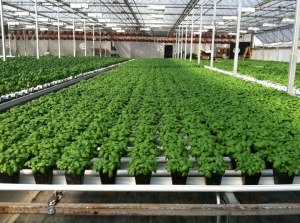 The Aztecs and Babylonian cultures grew plants without soil so technically they were employing a form of hydroponic. Our science and technology have improved considerably since the times of the Aztecs and Babylonians.
The Aztecs and Babylonian cultures grew plants without soil so technically they were employing a form of hydroponic. Our science and technology have improved considerably since the times of the Aztecs and Babylonians.
Indoor Hydroponic systems are nowadays considered as the main attempt in the field of modern agriculture. It is easy to explain, why the hydroponic agriculture is turning out to be a global phenomenon. The answer is not just the growing desires among the cultivators to accomplish more, but also the fear arising within the society regarding the ambiguity of climate having the escalating effects on their harvest.
As the people are becoming more and more environmentally conscious, the locally grown food supplies are getting preference in comparison to food sources that are not grown locally. Hydroponic system offers not just an effective alternative for growing yields, but are in harmonize with environmentally-friendly emotion of the public.
And it’s gainful in terms of expenditure, as the cultivators have more liberty to try the mixture of inputs with each cycle, preserving supplies such as nutrients and water.
A commercial farmer will obviously look for the utmost use of the resources to prevent any waste. This theory is used in each aspect, whether it is the growth medium or the nutrients.
Being a soil-less culture, a variety of growth media are being employed in commercial hydroponic systems. Clay pebbles, Rockwool, Perlite, coconut fibers are kept in air suspension to boost the nutrients saturation collectively eradicating the role of a middle man.
Working through several obstacles, hydroponic system has proved itself to be a productive agriculture technique, as around twenty-thousand to twenty-five thousand hectares of land in the earth are under hydroponics farming giving up to 6-8 billion dollars worth of production.
So, no more concern of adverse weather condition or shortage of farmable lands. Growing your favorite fruits or vegetables indoor is now a child play with hydroponic farming.
Friday 5 June 2015
Alfaculture To Change The Future Of Livestock Industry
The global warming and unpredicted climatic conditions has taken farmers to hold close sustainable livestock feed production methods. Many farmers are turning to hydroponic and greenhouse technologies as a risk management strategy, especially hydroponic fodder production to feed livestock. For more details visit: alfaculture.com
Sunday 10 May 2015
What Is Alfaculture Or Hydroponic Green Fodder
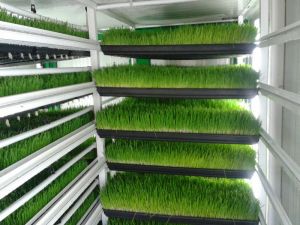 Alfaculture is also known as Hydroponic green fodder. Also, the generation of hydroponic green foods or Alfaculture is one such route through which you can adequately develop and produce the right nourish for your animals. The healthful advantages of hydroponic green grains (grew grains) are best fit for all animals including, sheep, cows, steeds, goats, chickens, that give animals enhanced development and general wellbeing.
Alfaculture is also known as Hydroponic green fodder. Also, the generation of hydroponic green foods or Alfaculture is one such route through which you can adequately develop and produce the right nourish for your animals. The healthful advantages of hydroponic green grains (grew grains) are best fit for all animals including, sheep, cows, steeds, goats, chickens, that give animals enhanced development and general wellbeing.
Hydroponics innovation has come up to develop grub for homestead creatures, as a distinct option for routine technique for green feed creation. It is a very much acknowledged truth that encouraging dairy creatures is fragmented without incorporating green grain in their eating regimen.
The word hydroponics has been gotten from the Greek word 'water working'. Hydro signifies "water" and ponic signifies "working" and it is an innovation of developing plants without soil, yet in water or supplement rich answer for a brief time. The hydroponics green grub creation unit comprises of a nursery and a control unit.
The span of the green house is more or less 25 feet (length) x 10 feet (width) x 10 feet (stature) and can possibly create 600 kg of green grain every day in seven days. Inside the green house, racks are available and every rack contains various lines, in which plate containing doused seeds are suited. Channels containing miniaturized scale foggers are fitted simply over the plate for water hazing, which eventually keeps up the nursery mugginess.
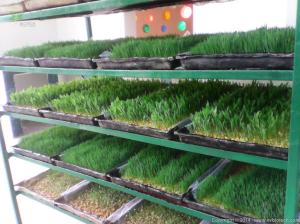 Distinctive sorts of grub like maize, wheat, cow pea, and so forth can be developed by hydroponics innovation. Feed sprouts are delicate and youthful, the likeness crisp green grass. In that capacity, they are exceedingly satisfactory and nutritious to different kinds and classes of domesticated animals. On a dry matter premise, hydroponic grain contrasts positively and different nutritious feedstuffs.
Distinctive sorts of grub like maize, wheat, cow pea, and so forth can be developed by hydroponics innovation. Feed sprouts are delicate and youthful, the likeness crisp green grass. In that capacity, they are exceedingly satisfactory and nutritious to different kinds and classes of domesticated animals. On a dry matter premise, hydroponic grain contrasts positively and different nutritious feedstuffs.
Alfaculture has a higher nutritious value than the customary green grub. In the circumstances where grains can't be developed; agriculturists can deliver hydroponics green feed for their creatures.
Sunday 19 April 2015
Alfaculture- Innovative Technology For Production Of Hydroponic Green Fodder
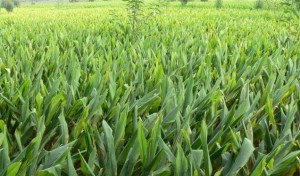 Hydroponic green fodder production or Alfculture is the most viable option for feeding sheep, goats and other livestock. The interest worldwide is increasing for hydroponic fodder as a feedstuff for sheep, goats, and other livestock. As all are aware of, Hyroponics is the science of soilless farming; it is the method of growing plants without soil. Only moisture and nutrients are provided to the growing plants. Hydroponic growing systems produce a greater yield over a shorter period of time in a smaller area than traditionally-grown crops.
Hydroponic green fodder production or Alfculture is the most viable option for feeding sheep, goats and other livestock. The interest worldwide is increasing for hydroponic fodder as a feedstuff for sheep, goats, and other livestock. As all are aware of, Hyroponics is the science of soilless farming; it is the method of growing plants without soil. Only moisture and nutrients are provided to the growing plants. Hydroponic growing systems produce a greater yield over a shorter period of time in a smaller area than traditionally-grown crops.
Hydroponic green fodder production system or Alfaculture is a year-round growing system that produces a consistent quantity and quality of livestock feed or green fodders regardless of weather conditions.
Alfaculture units are usually used to sprout cereal grains, such as barley, oats, wheat, sorghum, and corn, or legumes, such as alfalfa, clover, or cow peas. Barley is the most commonly grown forage, because it usually gives the best yield of nutrients.
Alfaculture units usually consist of a framework of shelves on which metal or plastic trays are stacked. After soaking overnight, a layer of seeds is spread over the base of the trays. During the growing period, the seeds are kept moist, but not saturated. They are supplied with moisture and nutrients, usually via drip or spray irrigation. Holes in the trays facilitate drainage and the waste water is collected in a tank.
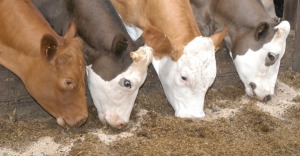 The seeds will usually sprout within 24 hours and in 5 to 8 days have produced a 6 to 8 inch high grass mat. After the mat is removed from the tray, it can go into a feed mixer or be hand-fed to livestock. Livestock will eat the whole thing: seeds, roots, and grass. There is minimal waste.
The seeds will usually sprout within 24 hours and in 5 to 8 days have produced a 6 to 8 inch high grass mat. After the mat is removed from the tray, it can go into a feed mixer or be hand-fed to livestock. Livestock will eat the whole thing: seeds, roots, and grass. There is minimal waste.
Alfaculture units can be set up in any building, including a garage or basement, a greenhouse is ideal because temperature, light, and humidity can be precisely controlled. Efficient, year-round production of green fodder is possible under optimal environmental conditions; approximately 70°F, 60 percent humidity, and 16 hours of light can produce maximum yields.
Wednesday 15 April 2015
Alfaculture To Meet Middle East’s Increasing Livestock Feed Demand
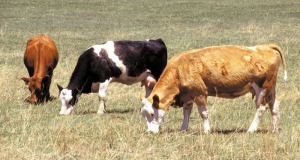 The Middle East and North Africa (MENA) region has been a rapidly growing market for livestock products and red meat exports in the past decade. According to the exporters from India and Australia, the MENA countries are now increasingly depending on foreign imports of cattle and sheep and demanding high value portions of quality red meet. The fast growth in the hospitality industry had lead to a major revive in the livestock industry; the increasing population in the region due to its high economic prospects is also a major growth factor.
The Middle East and North Africa (MENA) region has been a rapidly growing market for livestock products and red meat exports in the past decade. According to the exporters from India and Australia, the MENA countries are now increasingly depending on foreign imports of cattle and sheep and demanding high value portions of quality red meet. The fast growth in the hospitality industry had lead to a major revive in the livestock industry; the increasing population in the region due to its high economic prospects is also a major growth factor.
The country is importing majority of its livestock products from other countries all over the world to meet the increasing demand. Livestock expansion projects are growing around the GCC region; despite the truth that almost all the GCC countries are highly dependent on livestock imports from other regions of the world to meet their domestic demand.
All GCC countries are exploring new ways to improve their poultry and livestock sector through enhanced domestic production. This gives an excellent opportunity for relevant product manufacturers and service providers to capitalize on this sector. The adaptation of modern agricultural practices for the production of livestock feed and the incorporation of such techniques in the livestock rearing can make wonders in the industry which indeed lead to limited export needs.
Sustainable livestock feed production requires advanced farming practices such as Alfaculture, in which the production of green fodders are carried out through the method of soilless farming- Hydroponics. Hydroponic green fodder production or Alfaculture is sustainable in many ways, as it requires only less water and arable land for the plant cultivation. Hydroponic green fodders are the most sustainable livestock feed and the best suited for the MENA region.
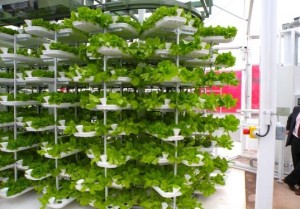 Cattle, sheep and goats play an important role in the emerging markets in GCC countries: their milk and meat are important protein sources for the people in the region. The production rate of livestock and dairy products in the MENA countries is higher than many other developed nations in the world. According to experts, per capita consumption of animal meat and products could rise by a further 44%, by the year 2030.
Cattle, sheep and goats play an important role in the emerging markets in GCC countries: their milk and meat are important protein sources for the people in the region. The production rate of livestock and dairy products in the MENA countries is higher than many other developed nations in the world. According to experts, per capita consumption of animal meat and products could rise by a further 44%, by the year 2030.
There have been sharp increases in livestock numbers in the Middle East countries, causing grazing pressures on limited arable areas to surpass their sustainable capacity; and Alfaculture or Hydroponic green fodder production is the most convenient and healthy solution to meet the issue.
Monday 13 April 2015
Why Hydroponic Green Fodders are the best choice for livestock animals
Green fodders produced by growing seeds without soil but in water or nutrients rich solutions are known as hydroponics green fodder and the production method is termed as Alfaculture. Hydroponics green fodder production or Alfaculture is a method of cultivating livestock feed mostly in green houses under controlled environment, in nutrient rich water.
 Green fodders are staple feed for dairy animals. Dairy animals producing up to5-7 liters milk per day can be maintained exclusively by feeding green fodders. Inclusion of green fodders in ration of dairy animals decreases amount of concentrate feeding and thus increases profit. Therefore, for economical and sustainable dairy farming, fodder production round the year is highly essential.
Green fodders are staple feed for dairy animals. Dairy animals producing up to5-7 liters milk per day can be maintained exclusively by feeding green fodders. Inclusion of green fodders in ration of dairy animals decreases amount of concentrate feeding and thus increases profit. Therefore, for economical and sustainable dairy farming, fodder production round the year is highly essential.
Green fodder produced in an Alaculture system would have many benefits as it is capable to fulfill bulk of animal easily and quickly, hydroponic green fodders are a major source of vegetable protein, it is a good source of carbohydrate (soluble and fibrous) and good source of minerals. Hydroponic green fodders are rich in essential vitamins and a good source of water (approx. 15-25% water).
The Alfaculture units are built with a greenhouse (for growth of fodder) and a control unit, (for regulation of light, temperature, humidity and water) for optimum growth of fodder. And generally in an Alfaculture system, fodders are grown in trays in 7 days cycle excluding the day for seed soaking.
 In comparison to conventional green fodders, hydroponics green fodders contain more protein, fat (ether extract) and soluble carbohydrates (nitrogen free extract); but less fiber, total ash and acid insoluble ash.
In comparison to conventional green fodders, hydroponics green fodders contain more protein, fat (ether extract) and soluble carbohydrates (nitrogen free extract); but less fiber, total ash and acid insoluble ash.
Feeding of hydroponics green fodder produced in Alfaculture units are more beneficial to all livestock due to their high nutritional values. Green fodders are highly succulent and relished by dairy animals. For instance; 7-8Kgs of Alfaculture maize green fodder can replace one kg concentrate mixture fodder. As it is highly succulent, it is recommended to offer maximum 20 kg hydroponic green fodder per day per animal.
Subscribe to:
Posts (Atom)
